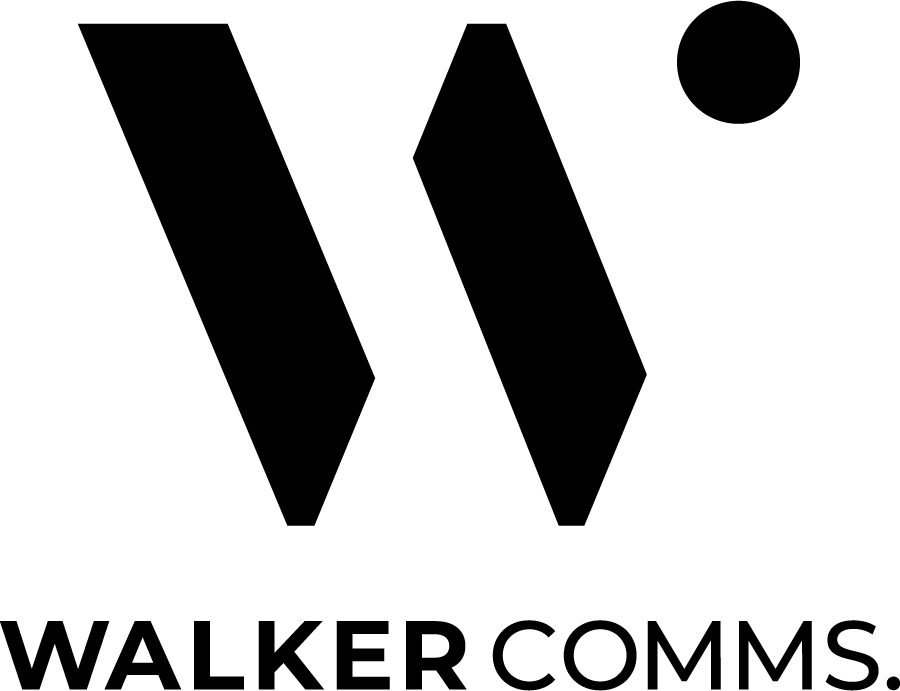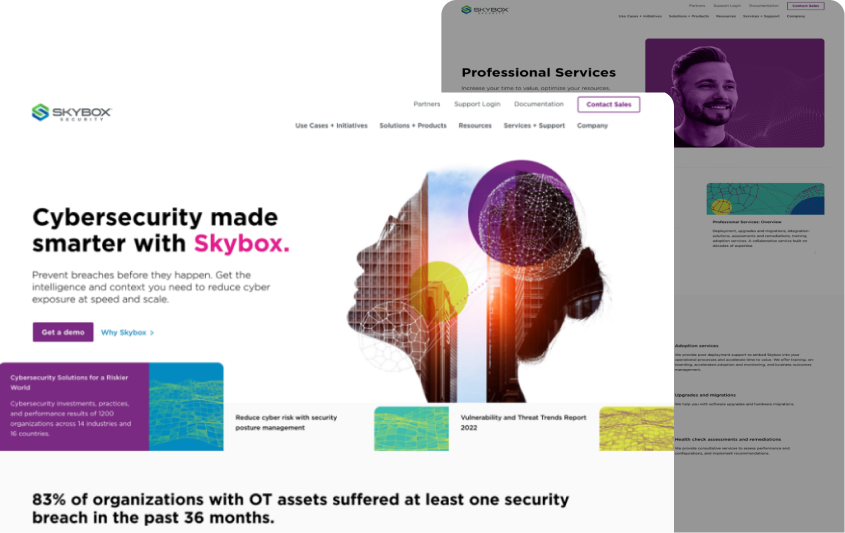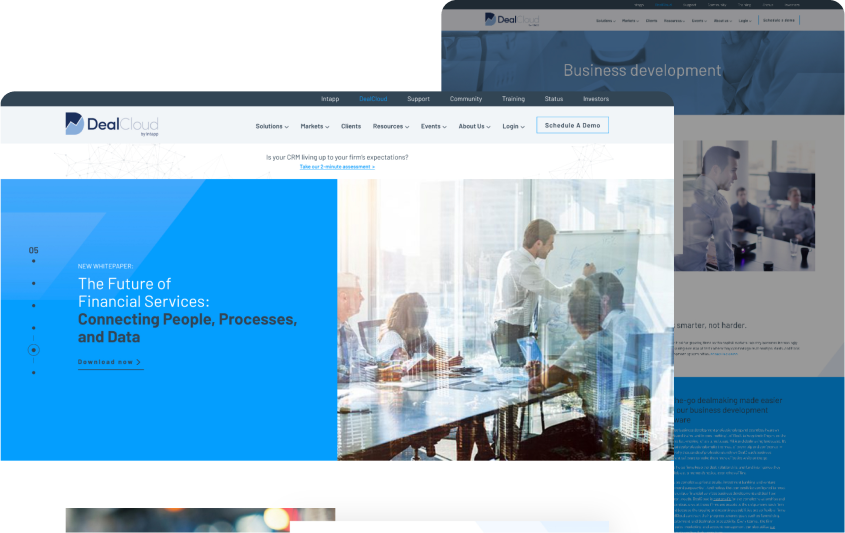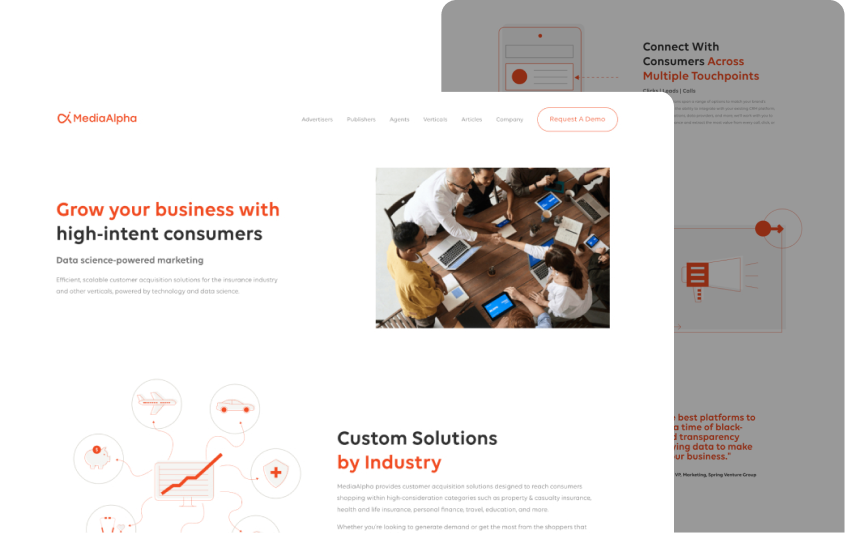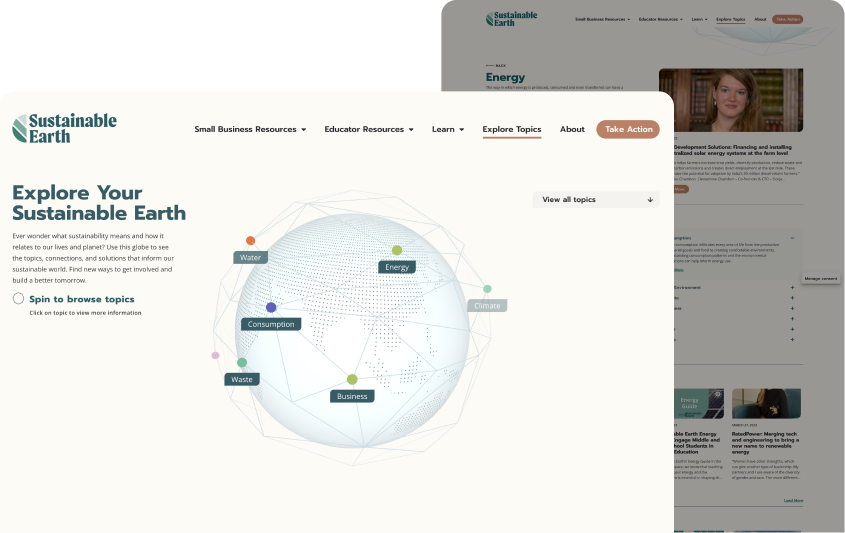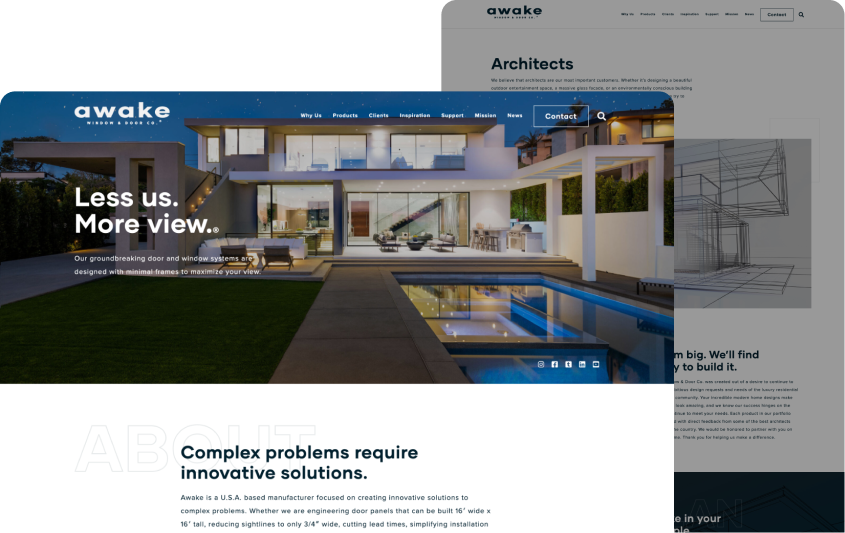Resources
Website Design + SEO for Innovative B2B Companies
Experts in B2B
We specialize in website design, development, and SEO for innovative B2B companies so we can provide our clients with unparalleled website strategy and industry expertise.
Strategic Web Partners
We challenge status quo to provide strategic recommendations based on research and industry best practices.
In-house Team
Having an entirely US based, in-house team means we’ve closed the gap between strategy and execution to ensure project success.
Proactive Communication
We always strive to be flexible and vigilant to anticipate challenges and proactively provide solutions.

“Thanks to Motion Tactic’s efforts, the site speed improved by 300% and organic search metrics increased by 130%. The team’s project management was efficient, clear, and focused. They consistently made communication easy, resolving bottlenecks and removing ambiguity.”
Ben Scott, Senior Web Marketing Manager

FAQ
Frequently Asked Questions
Motion Tactic is a Tempe, AZ-based custom website design agency founded with the purpose of helping organizations build websites that deliver impactful results.
What are the benefits of working with a boutique web design company?
We are a small but mighty web design company that is experienced in working with everything from start-ups to large enterprises. We prioritize hiring only the best talent and work with the most talented web designers, development team, and account and project managers who are all in-house and have years of experience honing their craft. We are the right web design agency for you if receiving an exceptional client experience and pushing creative boundaries with web designs are a top priority for your company.
Do you provide SEO services along with custom web design?
Yes! For all of our custom WordPress website designs, we migrate existing content as well as upload any new content. During this process, we also migrate SEO fields from the previous site. This ensures any on site SEO work is preserved and carried forward to the new site. Additionally, all sites we build are set up with technical SEO practices in mind. This means fields for meta page titles and descriptions are available on the backend for any main page or blog page to be optimized for search engines. We also test the site for performance to prevent any SEO implementation issues.
What makes you one of the best web design agencies?
Aside from our killer web design portfolio, we have a truly amazing team. Our full service agency has project managers, designers, and web developers who care deeply about the end result. You deserve a team who spends time learning your business needs, while also having the ability to create unique websites. In addition, we stand out from other custom web design companies thanks to our transparent timelines. Each client we work with receives access to an Asana Gantt chart, so they can see what our web designers and developers are working on in real-time.
Do you have any experience with eCommerce functionality?
We work mostly with B2B clients rather than B2C; however, we do have experience working with eCommerce businesses. Schedule a consultation to help us learn more about your eCommerce project so we can see if we’re the best website design agency for you.
What is responsive web design, and why is it essential?
Responsive web design ensures that your new custom website functions and looks good on all devices (desktops, tablets, mobile devices). It’s crucial for reaching a wider audience and improving user experience for your website visitors. By adapting seamlessly to various screen sizes and resolutions, responsive web design guarantees that your website maintains its appeal and usability across a diverse range of devices, thereby expanding your organic traffic and enhancing user satisfaction. Our websites are built to support Firefox, Chrome, Edge, and Safari.
How long does it take to build a custom website from scratch?
As a custom web design agency, we specialize in adapting our process and building websites to meet our clients’ varying timeline needs. Under most circumstances, you should plan for a custom website redesign to take 6-12 weeks to complete. The size, complexity, and creative style greatly affect the amount of time a website takes to complete.
What will happen if the project runs over schedule?
“Be flexible, be vigilant” is one of our core values at Motion Tactic. When we are flexible and vigilant, we spot problems far ahead of time and plan accordingly. During the scoping process of every project, we work closely with our clients and project management team to plan timelines and account for possible roadblocks. Timelines are then openly shared with clients via Asana so everyone is informed of what phase we’re at in the web design process. We are early and active to communicate with you over the course of the project, so you’ll be aware if the project timeline is projected to run over schedule. Because most of our design and development projects are quoted at a fixed rate, the project budget does not change if the project runs over schedule, unless the longer timeline is the result of an add to scope.
Can I update and manage the website content myself?
Absolutely. Updating your website or creating new content is made simple. There are many content management systems (CMS) out there, but we have found WordPress to be the best CMS out there.
Are there any features or functionality that I should be aware of that may not be obvious from your portfolio?
During our discovery process, we work with our clients to understand what marketing channels they are currently investing in. Once we understand which channels are driving website traffic, we then create information architecture and custom web designs with conversion paths in mind for potential customers at each stage of the buyer’s journey.
We know that a website should support your digital marketing efforts and we strive to ensure that your custom website will contribute to significant ROI. We build websites for search engine optimization, inbound marketing, content marketing strategies, leadership content promotion, and lead generation strategies.
How do you handle website maintenance and updates?
We offer multiple support options to suit each businesses unique needs. Small businesses may only need periodic updates while mid-size and large organizations may need ongoing updates and maintenance. We are are the one stop shop for website design, development, and support.
How much does custom web design cost?
At our web design company, it depends on the size and complexity of the website. Just like our custom websites, no two web design packages we create are the same. We work with companies of all sizes to align with their business goals and price points before creating a custom quote. We then scale our proven website design process up or down to fit the project scope. Our web design services typically start at $15,000 and are adjusted depending on the needs of the website project. This includes web designs, development, launch and post-launch support.


